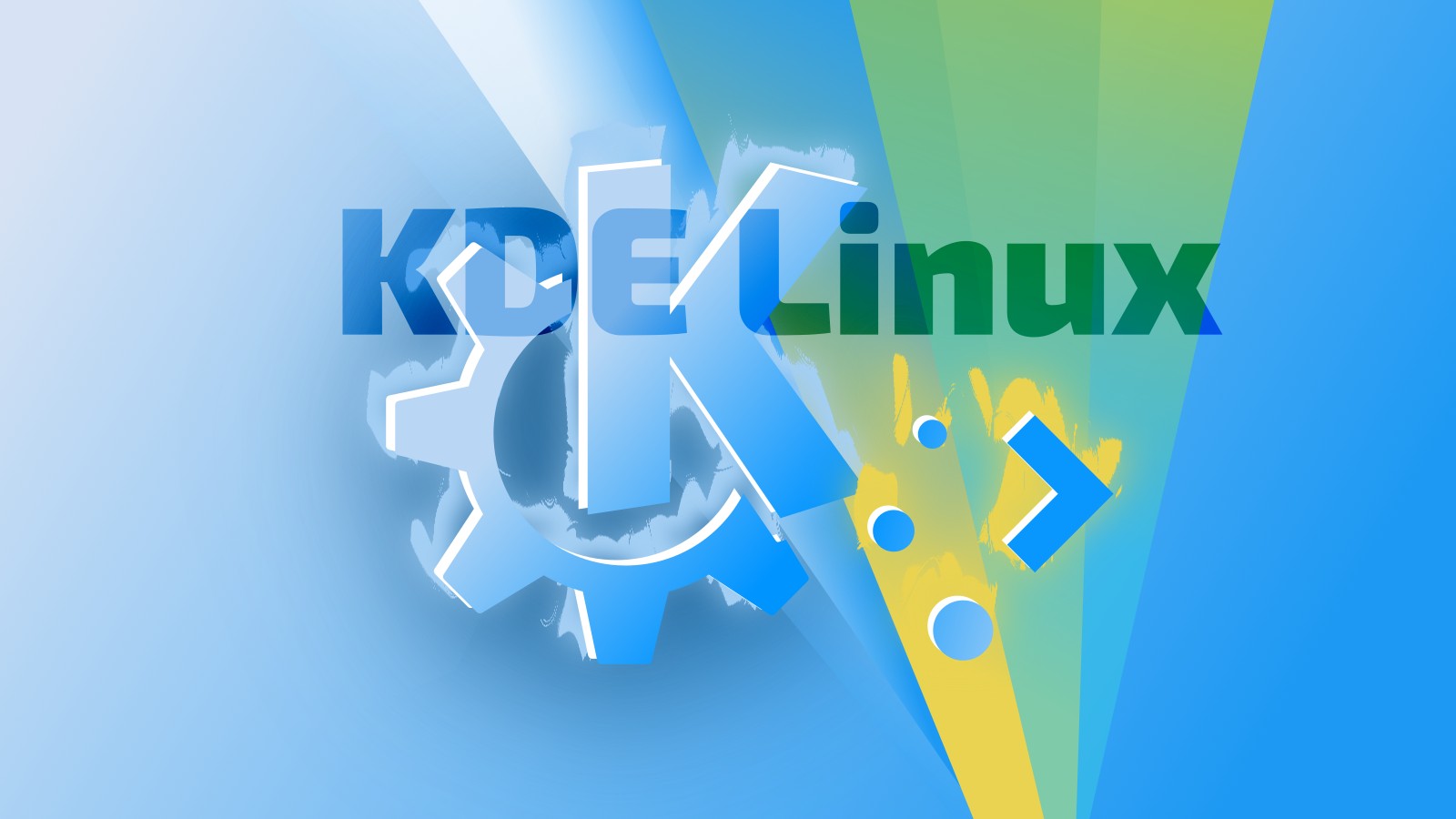- cross-posted to:
- [email protected]
- cross-posted to:
- [email protected]
Makes sense that it includes snap given that KDE officially supports their apps packaged as snaps, unlike Gnome.
If I recall correctly, aren’t they going for an Arch base? I assume they’re going to be enabling AppArmor so that the snap sandboxing is mostly working, except for the patches Canonical have failed to upstream so far.
Supporting both snaps and apparmor above selinux would be disappointing to me. Snaps more so, I at least get why AppArmor has supporters
Yes it is an Arch base. Not sure on the apparmor stuff and snap is basically banned from the Arch repos so it’s relegated to the AUR which makes it a pain.
I vote to kill snap
It says possibly snap, so we can hope…
What is so hated about snaps? I’ll admit I haven’t used Ubuntu since they started using snaps, but I don’t understand the hate about them in the Linux community.
The place to get snaps is proprietary and exclusive.
Oh… yeah I see the issue.
I can’t believe they used this as a pro for their distro…
I am currently only on Linux on my Steam Deck and I do have two RPi’s (though I don’t actively use them) so I don’t have personal current knowledge of differences between Snap, Flatpak, and App Image beyond that A: Snap always brings up lots and lots of hate in comments and B: is from Canonical.
But is it possible that they might choose to use Snap for having more program options due to Ubuntu being such a “mainstream” distro? I know lots and lots of programs do release Flatpaks, but are there more of them or does Snap have more? Real question since I am aware of how heated some threads get with folks being really “fuck Snap” or “it is fine.” Mostly just curious since I am more and more likely to move my main PC to Linux as my main OS after Windows 10 is dead.
Snap doesn’t just bring lots of hate in comments it also brings a lot of bloat in your system which is a big no in Linux community. Another thing is canonical is going out of their way to force snap. In Ubuntu even if you do apt install it is installing snap packages.
I’m not sure if there are more snap packages than flatpaks or .deb/.rpm but most Linux users are competent enough to either add custom repos or follow simple build instructions to build from source.
I wasn’t aware of Snaps being used in-place of regular installs with apt. Are they shown to be Snaps in the name of the program when using apt search? And if there is a Snap and a regular deb, do they both show up (again if using apt search)?
But flatpak also brings a lot of bloat. That’s the point of these 2 formats. You are trading bloat for portability.
The question here is not which one but why not both[*]? Also the target audience for this distro doesn’t know how to add repos, that’s the point of it.
[*] the answer is that Snap Store has had malware in it multiple times but that could imo be solved by a disclaimer
Think of it as the Mac appstore VS the Windows App store. Mac apps (flatpak) are the same as desktop apps, but sandboxed, the store isn’t intrusive, and people found it convenient, so it was fine. Then the windows app store (snaps) launched and it did basically the same thing but slightly worse, except Microsoft (canonical) forced it down its users throats, so people hated it.
Both camps are right, from a technical perspective, snaps are fine, but philosophically, it sucks, and the Linux community cares way more about the latter than the former, otherwise they’d all be running windows.
I think that your example of the App Store and the Microsoft Store is helpful! I work on both systems at my job fixing computers for consumers. The only thing I dislike about the App Store is that it doesn’t let you install things without first signing in with an Apple ID (the spam levels of pop-up messages trying so freaking hard to make you sign in is infuriating). But the MS Store feels like all the worst parts of the Play Store and really fucks things up if it breaks. I will likely remember your reply the next time I think about Flatpaks and Snaps though. lol
I don’t like Snap too, but it has some advantages over Flatpak. And unfortunately the most popular distribution still uses Snap. In example it is easier to create Snap packages
and Flatpak does not support CLI only applicatoins( Edit: my bad ) , but Snap does (something like grep in example). Also some may like it more that Snap relies on AppArmor instead using the custom solution of Flatpak.All in all, its not like black and white which is better. I still wish only one of the formats would exist, because this is not the kind of fragmentation I wish to have. But both exist and the end user should decide which of them to kill.
Flatpak does not support CLI only applicatoins
Where does that misinformation come from? That’s not the first time I’ve heard it. Was that actually true at one point?
Maybe you are right. Its something I repeat it myself, after doing a research back when it was new. Given Neovim is available on Flathub, maybe its possible. Maybe it was true at some point. Good catch, I’ll make sure not to repeat that anymore, as I don’t want spread misinformation.
In think it comes from flathub not having many cli applications in it. I’d love to drop snaps for Flatpak only. But I can get so many snaps that aren’t on flathub it’s crazy.
deleted by creator
I am pretty sure Ubuntu is still far and away the most popular desktop distro. For servers I would have guessed it was something like RedHat/CentOS or possibly Debian.
Maybe they’ll fix the sddm custom theming? It’s currently broken on all immutables and doesn’t allow custom themes.
Yeah that’s certainly annoying but still relying on SDDM to solve this. There is a movement to see if we can import SDDM into the KDE umbrella but it’s a bit stalled at the moment.
Making a LFS distro already show you all the GNU mess! Why another distro?
deleted by creator
99% of people don’t understand anything about Snaps except from thinking they’re worse than Flatpak
what’s the benefit of packaging drivers that way? surely not permission separation
Probably not the purpose of this distro but using snaps in this way are a massive benefit for embedded systems
So you’re telling me that if snaps take off and become a standard there’s a good chance I’ll have to use them just to get my drivers? Now I hate them even more!
No but you see the drivers will be (must be) approved by Canonical which surely makes things better :|
it’s actually the other way. Canonical has had troubles policing Snap Store from malware
This is highly unlikely. Snapd is open source so you can just repackage the software for your distro of choice. I don’t think giving users the ability to use both Flatpak and Snap is bad. Though I would put Snap behind a disclaimer due to Snap Store’s history.
Just curious because Distrowatch can be easily gamed; does anyone know how this might affect the linux consumer market? I’m using Mint and see no reason to switch to this. I used to nerd out about different distros but aside from the enterprise distros or Debian or Arch preferences I don’t see why people are using smaller distros anymore. Hobbyist i guess?
Thanks for de-influencing me out of switching to KDE plasma, mint and ubuntu are the only distros I’ve tried and I’ve been thinking about trying something new
New users (like me) that aren’t necessarily passionate about linux and just looking for a windows alternative can be easily persuaded early on
Looks like there’s still something you can try, brother.

After bashing my face against the wall getting lutris to run StarCraft 2, I’m avoiding looking at my OS too hard
I feel like I should try arch just once so I understand the memes
There are better ways than using Lutris
- Try with Bottles
- add Battle.Net as a non-steam game
Can I run an installer off a mounted iso in a bottle?
Yes
Arch is a make it yourself distro. It comes barebones and you install what you need (which in my opinion gives better knowledge about your system). And the packages are up-to-date which is good if you are gaming.
If you don’t like to tinker then Arch may not be for you. Something arch-based could be a better fit. Like Garuda or EndeavourOS.
When you say you can install what you need, what does that mean exactly? Does that mean things like lib C or vulkan or drivers so my USB ports work? Seems to me like I don’t actually understand how a computer works at a fundamental level when I’ve never had to configure a sound card or manually install a driver and the explanations I get are too technical to practically apply
I’d like to understand my PC well enough to use Arch but I’m finding a hard time figuring out what I’m missing exactly. Practically speaking, what does direct X or vulkan do?
When it comes to Arch the wiki is your friend. It will tell you if additional configuration is required to get your packages working and what other dependencies can be installed. If something isn’t working properly then the wiki probably knows why.
Arch comes with no drivers and additional packages by default. You need to install them manually. But you don’t need to install every package for your system manually. If you need glibc it will most certainly get pulled down as a dependency.
You don’t need to know every part of the system to use arch but you need to be interested enough to learn how your system works if something is not working or you want to configure your system in a certain way.
For starters I would recommend going with something Arch-based like Garuda or EndeavorOS if you want to learn Arch. I started off with my Steam Deck and later Garuda on my desktop. Once I was comfortable enough around Arch I decided to install vanilla Arch (manually, the wiki way) in a VM. When installing my system I wrote down every command I used and from that it snowballed in to my own install script for arch. That taught me a lot.
Alright I’ll give it a try, can you recommend a VM other than virtual box? I was having issues with dependencies when installing it
I too bashed my head with lutris on some games to the point that i gave up on Linux. Then i tried it again but this time using Bottles and it’s working really fine for me, almost flawless.
Yeah I think it’s time to stop being lazy and actually learn how wine works, I can’t get Warcraft 3 to work
Did you try lutris out of flatpak? I don’t know why but this version has less issues. I compared lutris vs bottles and for me the performance of bottles was way worse. (Sadly). Because the bottles ui is much better
I didn’t try that version, I just transitioned to Bottles. I didn’t notice any performance loss though I might compare it just to see what it’s like.
I still wonder what the difference made. I would image, it should be the same.
deleted by creator
Do you know what the issue was? Iam on kubuntu with the flatpak version (important) of lutris and battle.net + sc2 just runs out of the box. With a normal installation of lutris it didn’t.
Kept telling me I was missing Vulkan and lib C (I think) and I kept installing it wrong somehow. Eventually I downloaded steam and ran one game (potion craft) and it installed everything I needed automatically, lutris worked just fine after that
My switch to Linux started 1,5 years ago with Manjaro KDE - and since then, I am still a fan of KDE, which is kind of “Windows UI done right” for me. Ergonomic, configurable, consistent. I also find Pantheon, Enlightenment, and Budgie to be cool concepts, but from a practical side, KDE is a no-brainer for me.
Mint comes with Cinnamon by default, and I guess that’s what you’re using. For me, Cinnamon is too old-fashioned, it’s like you’re back to at least Windows 7 timing. Some people like it, but for me it’s just old and out of touch with the progress of UI’s.
GNOME used in Ubuntu is good with app theming (yay for adwaita!), it is unique and minimalistic, but its overall design is just…not for everyone, and customization is heavily tied to unsafe practice of plugins which has been exploited many, many times.
With all that said, try everything out in a VM or something and see what’s good for you. There are really no wrong choices!
I totally forgot about using a VM, can you recommend one besides virtualbox?
VMWare, GNOME Boxes, QEMU+virt-manager
Personally using the latter, appears to have the best support and more configuration options compared to alternatives, as well as advanced options like GPU passthrough etc, though it has a bit more of a learning curve, and each alternative option should be fine.
mainly hobbyists or some very specific feature. For example antiX for old hardware or Spiral Linux for the better installer, gaming specific distros for gaming etc. Also there are protest distros which advertise not having something - usually SystemD.
deleted by creator
If it’s only there like in KDE Neon, I’m fine with it. I don’t want any of my distro apps to come as Snaps though.
Why? What’s the issue with Snap? Is Flatpak any better?
Yeah, Flatpak is far better. The most glaring issue: Canonical hosts the only Snap backend, you can’t host it yourself. Flatpak on the other hand is fully open.
Don’t introduce proprietary crap just so companies can profit off of it.
Don’t introduce proprietary crap just so companies can profit off of it.
I agree but I think it’s the user who should be able to make the informed choice (ie. during installation)
Honestly, why enable this kind of behavior in any way? Any user is free to make an informed choice by installing it themselves.
We all know how this goes. Once a critical mass is reached, enshittification begins to milk everything dry. By making it an installer option, you’re legitimizing it and supporting a worse future for the Linux desktop.
Ok but KDE has official Snap packages so they already are “legitimizing it”. Also snap won’t be able to entshittify anything. Snapd is still open source, so you can just repackage the software for different package system.
My guy. There is no open backend for Snap. If Ubuntu enshittifies Snap, nobody can host an alternate backend for them. How does the client being open source help you?
You simply use a different packaging format as I said in the previous comment.
deleted by creator
This is a stupid argument. In FSF’s eyes even having nonfree repository (ie. for drivers) is bad so this is completely irrelevant for anyone considering flatpak or snap. Both have nonfree stuff in there.
deleted by creator
I’m not arguing whether snap or flatpak is better. Flatpak is better.
But your arguments are going against each other. You disagree that FSF should tell you what software you can use but then you want to tell other users what software they can use. If you use flatpak despite of FSF’s opinions, you should let people use snap despite of your opinion.
Me using no systemd, no flatpak, no snap… I think I’ll pass
Lame
No, Lame is for audio, this is a whole Linux distro
I use Karch, btw.
Man, I almost want to say “I love it”. Remove the “snap” and the “immutable” and I’m all in.
Almost there 🤏🏽I don’t understand why people want immutable. I don’t know all that much about Linux but on my Steamdeck it keeps getting in the way anytime I try to do anything
I personally don’t tinker much with the OS. I want it to stay out of the way and let me do things. In the case of Bazzite, everything I need for gaming is just there and works without me lifting a finger.
I like the safety and simplicity immutables bring.
If I’m doing something out of the ordinary, a temporary container usually suffices.
It’s really made the switch from Windows as a daily driver much easier.
You certainly have to learn new ways of doing things when you want to tinker, but they are basically UNBREAKABLE, which is my main plus point. I’m busy, I need my PC to be reliable. I don’t want to have to troubleshoot stuff just to keep it up and running.
If I had more time I would really enjoy the tinkering, but I don’t so I need my distro just work.
Some people like it, I don’t like and will never mess with it. I do understand why some folks like it. It’s basically for those who want a system that’ll never break to a point where they can’t access their data. I just can’t use it
Immutable is fantastic in theory. Where it falls apart is having to basically rebuild the whole distro every time you want to make a change. It should be there your base distro is immutable, then any extra changes go on an additional mutable layer but that would be difficult to set up. (You’d need a package manager like Nixos or something.)
your base distro is immutable, then any extra changes go on an additional mutable layer
That is exactly how OsTree and other layering solutions work. Only Nix requires a whole distro rebuild.
It isn’t, though. Package layering modifies the install itself. See: https://docs.fedoraproject.org/en-US/fedora-silverblue/getting-started/#_flatpak_command_line
The big problem with the way ostree works is that installing things has side effects. Every item you install with ostree makes all future items slower to install, including regular os updates. This is a significant flaw in the way they designed it and really makes immutable oses less attractive.
It’s not a flaw. Ostree is a last resort, you should be using containerized software. Layering a package should only be done when strictly necessary and not as the regular way to manage packages. If you need an overtly customized system, you use Nix or universal blue to design your new system declaratively and create your custom image.
That is a flaw. Flatpak is great where it works but Flatpak doesn’t solve all problems, neither does any one solution except os level modification. It can be a last resort by it should be a last resort that works. The layering system could be put together such that you don’t get side effects of installing packages like that. It might be tough to fix but that doesn’t make it not a flaw.
Please remember that no one is taking anything away from you. If you don’t like it, you don’t have to use it. Traditional package managing isn’t going away any time soon. You are safe. Others can have their preferred tech, and you don’t have to like it. It’s ok to have different tastes.
And even then with
nixos-rebuild switchyou won’t really notice that you’re “rebuilding” anything
There’s KDE Neon already. The whole point of this distribution is the atomic immutable part.
Neon isn’t arch based, which is why this one piqued my interest.
Then just install KDE in your Arch install. Or use endeavorOS with KDE, or any other Arch based OS with KDE. Don’t be dismissive of other people’s interests.
Not being dismissive, just expressing an interest in something different.
It’s just Arch with Plasma then…
That is being maintained by the kde team.
I use Fedora KDE but this one sounds like exactly what I need. I primarily use Linux for software dev and web browsing and Windows for gaming and Office.
Fedora Kinoite exists already. It’s my daily driver for dev and gaming and works great for me.
I use normal KDE because I don’t know how much of a hassle it would be to put everything in containers and use flatpaks for everything.
I wonder what the differences will be!
I found out about this yesterday when searching for the KDE sources to make some alterations to the lock screen. I guess this distro is not for me.
Hopefully the stable version will become a competitor to Linux Mint
Snap WTF?


















